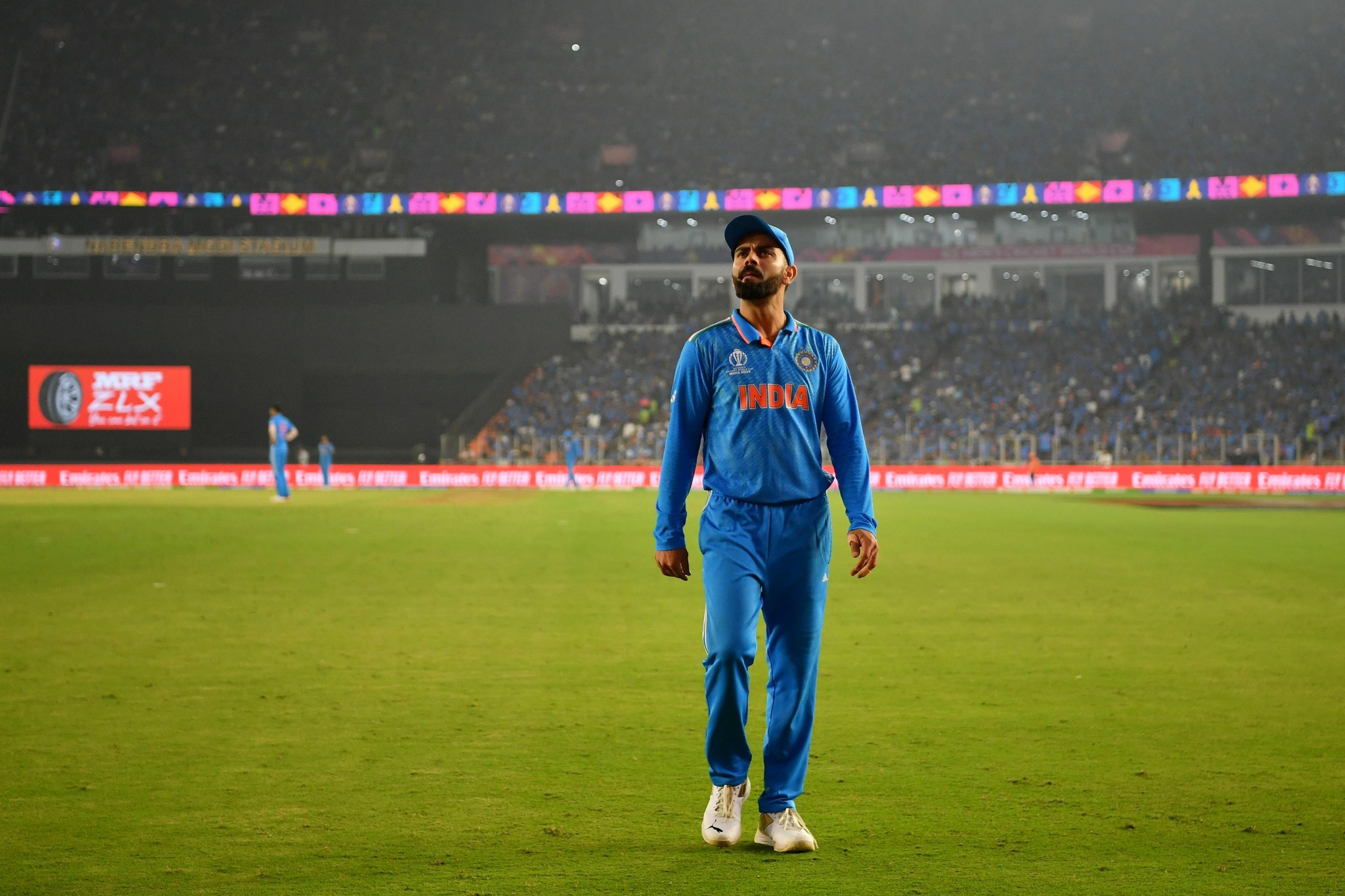
Sport Editor Lucy Blitz and Writer Alice Hunt discuss the disappointing ODI World Cup with UOB’s BUCS Cricket Team
On the back of a monumental Ashes summer, this year’s ODI World Cup was destined to face the spotlight, with conversation over the longevity of the format reaching its pinnacle. Seven weeks later, with England fans in despair amid a lack of interest and a team coming to the end of its ‘golden era’, few in the UK can say they preferred this edition to the grand spectacle four years ago – but what exactly has turned fans away?
Predominantly a summer sport, cricket has always benefited from its place in the calendar year. With the 2019 tournament held over June and July, it faced little competition from other events – the footballing season was over, while the Wimbledon Championships and the Tour de France were further down the line.
“2019 was a massive summer… everyone was immersed in it” explained UBWCC bowling all-rounder Harriet Jones. “There was enthusiasm from cricket and general sports fans alike”.
The tournament has also attracted smaller crowds than fans would have hoped for
UBCC Captain Will Burston echoed Jones’ sentiment. “Obviously it helped that England were really good, but everyone was tuning into it”.
This time round, the tournament has battled for views alongside the Rugby World Cup, the Premier League, and the WSL, to name a few. Increased competition for the attention of viewers has contributed to the lack of interest from general lovers of sport, though Jones is convinced that “cricket fans have still been immersed in the World Cup” this autumn.
Yet early start times wound possible support further, with just under half of England’s group games commencing at 9am on a weekday. For UBWCC Captain Gemma Porter, an early morning first-ball has meant the World Cup has lost the attention of those who would otherwise tune in for an afternoon start. “For a lot of people working 9-5, they really can’t be sitting there watching it.”
The tournament has also attracted smaller crowds than fans would have hoped for, despite grounds used including the 132,000 capacity Narendra Modi Stadium. For Porter, “the games are in places where there’s way more people, way more cricket fans. I would’ve expected them to be bigger”.
India, the nation where cricket is most popular across the world, offered their grand stages for this year’s World Cup. Yet reports of a myriad of issues surrounding ticket sales emerged, with fans struggling to navigate online platforms and having to travel across the country to collect theirs.
…the length of the World Cup has made it difficult for fans to keep consistently motivated
Despite this, almost 50,000 tickets were sold for England’s opener against New Zealand, a re-match of the 2019 final. A figure 50% higher than the capacity of Lord’s Cricket Ground, Jones explained that crowds “look small, but they’re bigger than what most UK stadiums can hold.”
Importantly for Jones, “the fans that are there are engaged in the matches”. Yet, aside from games involving India, there have been a striking number of empty seats at matches featuring neutral teams.
What’s more, the length of the World Cup has made it difficult for fans to keep consistently motivated. “It’s hard to stay engaged and watch every single game because there’s so many of them and it goes on for so long”, explained UBCC seam bowler Ben Blenkinsop.
England’s poor form, as well as the ECB’s muddled focus on 50-over cricket, has had a fundamental influence on support for this year’s World Cup. “ODI cricket has just fallen off completely, and I don’t think England put any emphasis on it”, explained Burston.
Jones agreed, describing that “in the run up to 2019, the four years before were all aimed for the World Cup. This team has not been able to gel together because they have not played in the same format”.
Key players including Jonny Bairstow and Joe Root had not starred in a 50-over game in over a year before the World Cup. Largely down to scheduling issues, many competing formats of cricket make it difficult for England’s stars to get into one-day mode in time.
While this complication is not unique to Jos Buttler’s side, Blenkinsop notices that not all teams face the same hurdle. “When you look at the Netherlands, their players do not have a place in the Hundred or franchise cricket, so they have more time to play ODI cricket and prepare”.
Key players including Jonny Bairstow and Joe Root had not starred in a 50-over game in over a year before the World Cup.
“Everyone is out of form at the same time”, continued Blenkinsop, speaking of an England side who are facing the loss of key players as they reach the latter stages of their cricketing careers.
In a group where 11 of the 15 players are over the age of 30, summer sensation Harry Brook is the only member under 25. For some, this World Cup is their last dance with ODI cricket, but it hasn’t had the ending they would have hoped for.
Meanwhile, Porter explains her disappointment at the low levels of support for the World Cup, especially after such an enthralling summer that included a home Ashes series. The BUCS captain had high expectations for the tournament, after 17.8 million people watched England battle with Australia over June and July. “There were a lot of people following the Ashes who I had not seen following tests or cricket before… so I think it should have set off more interest”.
So what’s the solution?
For Porter, the first step is to transform a competition that has witnessed the development of less powerful cricketing nations this year. With shock performances from the Netherlands and Afghanistan, the bowler is a firm supporter of the expansion of participating teams.
“You need two leagues already, so why not stick in some more teams like Ireland and the West Indies to make it more interesting?”
Yet the question as to whether the format is sustainable still remains.
With a handful of competitions facing off against ODI cricket, purists like Blenkinsop and Burston are concerned for the future of the 50-over game, and suggest that the ECB’s approach must change.
“I think we should get rid of The Hundred, and put that money into the Blast”, said Blenkinsop. “But I know how good The Hundred has been for the women’s game, so I’d improve the regional set-up for the women’s game. Then you can give the 50-over competition the time it needs.”
However, Porter disagrees with this idea. She argues that “if you had to ditch one you would ditch the Blast… the Hundred is successful and it is getting in new fans”, although she admits that “I really don’t think that is the solution – what the Blast does for counties and county fans is unmatched”.
Meanwhile, Jones disagrees with those who believe ODI cricket is a lost cause, underlining its significance for players at grassroots level. “It’s not dying – just internationally it’s becoming less popular.”
The significance of 50-over cricket cannot be understated for the UBWCC member, since it is “the most popular form of cricket played at club level”. Jones explains that “it is more relatable to what I play”, which is why it should be placed higher on the ECB’s priority list.
“It’s an underappreciated format”, agreed Porter. “I like the tactical side of the game – I do think it ebbs and flows. I can follow it along on my phone every half an hour, and if it’s interesting then I’ll switch it on.”
While the 2023 tournament may not have galvanised many new champions of the ODI-format, it’s clear that lovers of the sport hope 50-over cricket keeps its place in the calendar. Yet with a dismal campaign from the 2019 champions, it’s unclear which way the ECB will turn.
Check out these latest Sport articles here:

Comments